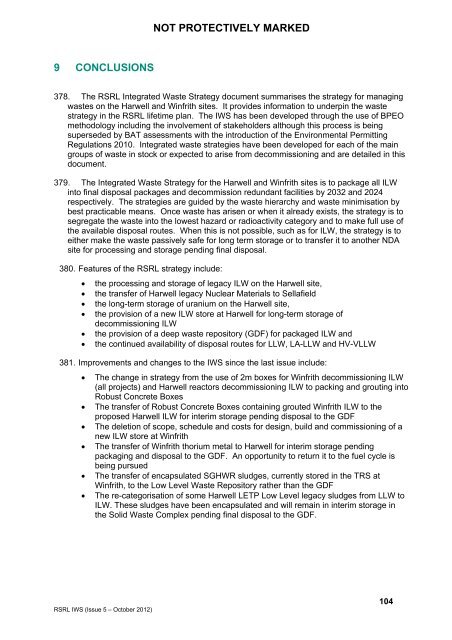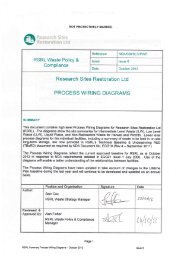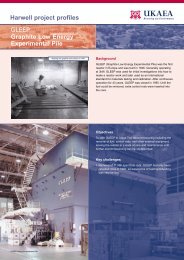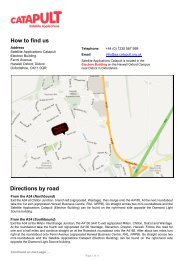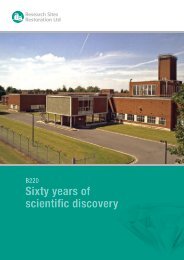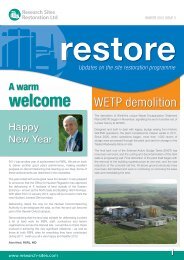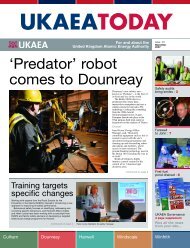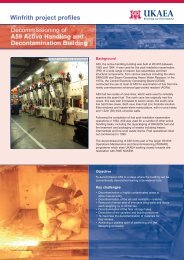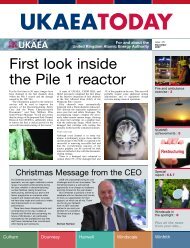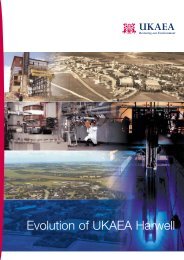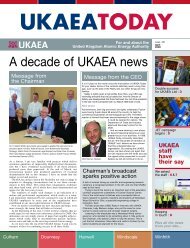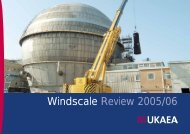RSRL Integrated Waste Strategy - Issue 5- Oct 2012.pdf
RSRL Integrated Waste Strategy - Issue 5- Oct 2012.pdf
RSRL Integrated Waste Strategy - Issue 5- Oct 2012.pdf
You also want an ePaper? Increase the reach of your titles
YUMPU automatically turns print PDFs into web optimized ePapers that Google loves.
NOT PROTECTIVELY MARKED9 CONCLUSIONS378. The <strong>RSRL</strong> <strong>Integrated</strong> <strong>Waste</strong> <strong>Strategy</strong> document summarises the strategy for managingwastes on the Harwell and Winfrith sites. It provides information to underpin the wastestrategy in the <strong>RSRL</strong> lifetime plan. The IWS has been developed through the use of BPEOmethodology including the involvement of stakeholders although this process is beingsuperseded by BAT assessments with the introduction of the Environmental PermittingRegulations 2010. <strong>Integrated</strong> waste strategies have been developed for each of the maingroups of waste in stock or expected to arise from decommissioning and are detailed in thisdocument.379. The <strong>Integrated</strong> <strong>Waste</strong> <strong>Strategy</strong> for the Harwell and Winfrith sites is to package all ILWinto final disposal packages and decommission redundant facilities by 2032 and 2024respectively. The strategies are guided by the waste hierarchy and waste minimisation bybest practicable means. Once waste has arisen or when it already exists, the strategy is tosegregate the waste into the lowest hazard or radioactivity category and to make full use ofthe available disposal routes. When this is not possible, such as for ILW, the strategy is toeither make the waste passively safe for long term storage or to transfer it to another NDAsite for processing and storage pending final disposal.380. Features of the <strong>RSRL</strong> strategy include:• the processing and storage of legacy ILW on the Harwell site,• the transfer of Harwell legacy Nuclear Materials to Sellafield• the long-term storage of uranium on the Harwell site,• the provision of a new ILW store at Harwell for long-term storage ofdecommissioning ILW• the provision of a deep waste repository (GDF) for packaged ILW and• the continued availability of disposal routes for LLW, LA-LLW and HV-VLLW381. Improvements and changes to the IWS since the last issue include:• The change in strategy from the use of 2m boxes for Winfrith decommissioning ILW(all projects) and Harwell reactors decommissioning ILW to packing and grouting intoRobust Concrete Boxes• The transfer of Robust Concrete Boxes containing grouted Winfrith ILW to theproposed Harwell ILW for interim storage pending disposal to the GDF• The deletion of scope, schedule and costs for design, build and commissioning of anew ILW store at Winfrith• The transfer of Winfrith thorium metal to Harwell for interim storage pendingpackaging and disposal to the GDF. An opportunity to return it to the fuel cycle isbeing pursued• The transfer of encapsulated SGHWR sludges, currently stored in the TRS atWinfrith, to the Low Level <strong>Waste</strong> Repository rather than the GDF• The re-categorisation of some Harwell LETP Low Level legacy sludges from LLW toILW. These sludges have been encapsulated and will remain in interim storage inthe Solid <strong>Waste</strong> Complex pending final disposal to the GDF.<strong>RSRL</strong> IWS (<strong>Issue</strong> 5 – <strong>Oct</strong>ober 2012)104


